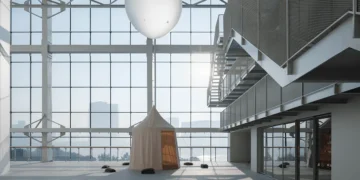
With increasing awareness of environmental issues, sustainable building practices have become more important than ever. From home renovations to larger construction projects, implementing eco-friendly practices can reduce environmental impact, lower utility bills, and create a healthier home environment. By using sustainable materials, energy-efficient designs, and mindful waste management, homeowners can make a significant positive impact. This article discusses key ways to make your renovation projects more eco-friendly.
Why Choose Sustainable Building Practices?
Environmental Impact
Traditional construction methods can be resource-intensive, leading to unnecessary waste and environmental strain. Sustainable building practices aim to reduce waste, conserve energy, and utilize resources more efficiently, contributing to a healthier environment. Choosing sustainable materials and energy-efficient designs helps decrease carbon emissions and conserves natural resources.
Healthier Living Environment
Sustainable practices not only benefit the environment but also improve indoor air quality and promote a healthier living environment. Eco-friendly materials, such as low-VOC paints and natural wood, reduce the number of toxins released into your home. This is particularly beneficial for those with respiratory conditions or sensitivities to synthetic chemicals.
Cost Savings Over Time
Although sustainable building practices might have a higher upfront cost, they can lead to significant savings over time. Energy-efficient appliances, improved insulation, and sustainable water systems can all reduce utility bills. Renovations that incorporate these features are a wise investment, as they add both immediate and long-term value to your property.

Key Sustainable Practices to Consider for Your Renovation
Energy-Efficient Designs
- Insulation and Sealing
Proper insulation and sealing are essential for creating an energy-efficient home. Well-insulated homes reduce the need for heating and cooling, lowering energy bills. Consider eco-friendly insulation materials, such as recycled denim, cellulose, or even wool. These materials provide excellent insulation and have a smaller environmental impact compared to traditional insulation options. - Energy-Efficient Windows and Doors
Windows and doors are often the primary sources of heat loss in a home. Upgrading to double-pane or low-E glass windows can improve energy efficiency by reducing heat transfer. These windows and doors help keep your home warmer in winter and cooler in summer, cutting down on the need for heating and cooling. - Solar Power Options
If feasible, adding solar panels to your home is one of the best ways to reduce your dependence on non-renewable energy sources. While this requires an initial investment, many state incentives and rebates are available for solar panel installations. Plus, using solar energy can dramatically reduce your monthly utility bills, making it a valuable investment.
Sustainable Material Choices
- Reclaimed Wood and Recycled Materials
Using reclaimed wood for flooring, furniture, or beams is an excellent way to reduce demand for new lumber. Reclaimed wood brings character to your home while reducing deforestation. Additionally, materials like recycled glass countertops or concrete made from recycled materials can be both beautiful and eco-friendly options for your renovation. - Low-VOC Paints and Finishes
Volatile Organic Compounds (VOCs) are chemicals commonly found in paints and finishes that can release toxins into the air. Low-VOC or VOC-free paints minimize these emissions, promoting better indoor air quality. Choose non-toxic finishes and stains for wood surfaces to keep harmful chemicals out of your living spaces. - Bamboo and Cork Flooring
Bamboo and cork are sustainable flooring options because they are rapidly renewable resources. Bamboo is durable, stylish, and suitable for various rooms in your home, while cork provides a soft, resilient surface perfect for high-traffic areas. Both materials are eco-friendly alternatives to traditional hardwood or carpet flooring.

Water Conservation Techniques
- Low-Flow Fixtures
Water conservation is critical for reducing environmental impact. Low-flow fixtures, such as faucets, showerheads, and toilets, significantly reduce water usage without sacrificing performance. This is especially important in areas where water scarcity is a concern, as it reduces the strain on local water resources. - Rainwater Harvesting
Incorporating a rainwater harvesting system is an innovative way to conserve water and reduce utility costs. Harvested rainwater can be used for gardening, toilet flushing, or even washing clothes, depending on the system’s setup. This practice not only saves water but also reduces runoff, which can help prevent erosion and protect local water sources.
Waste Management and Recycling
Construction projects often generate considerable waste. Partnering with a full-service contractor like All Island Handyman, who practices sustainable waste management, can help minimize this impact. A responsible contractor will separate recyclable materials from general waste, ensuring that materials like metal, concrete, and glass are properly recycled. Many also donate reusable items like doors, windows, and fixtures to local organizations, promoting sustainability within the community.
Smart Landscaping
Incorporating sustainable landscaping practices, known as xeriscaping, can reduce water usage and promote biodiversity. Choose native plants that are well-suited to the local climate, reducing the need for excessive watering or chemical fertilizers. Installing a drip irrigation system can further help conserve water by delivering moisture directly to the roots of plants.
Working with Sustainable Contractors
Choosing a contractor experienced in sustainable building practices is crucial to ensure that your renovation aligns with eco-friendly principles. Companies like All Island Handyman can guide you through material selection, energy-efficient designs, and sustainable waste management practices. By collaborating with knowledgeable professionals, you can rest assured that your project is contributing positively to the environment.
Finally, sustainable building practices offer numerous benefits, from lower utility bills to a healthier home environment, all while protecting the planet. By focusing on energy-efficient designs, eco-friendly materials, water conservation techniques, and waste management, you can ensure your renovation is both functional and environmentally responsible. Taking steps toward sustainability today helps pave the way for a greener future, one renovation at a time.




















inherently i believe anything new built or designed right now should go on the drawing board with eco friendly design lines and standards in mind. sadly that is often not the case.